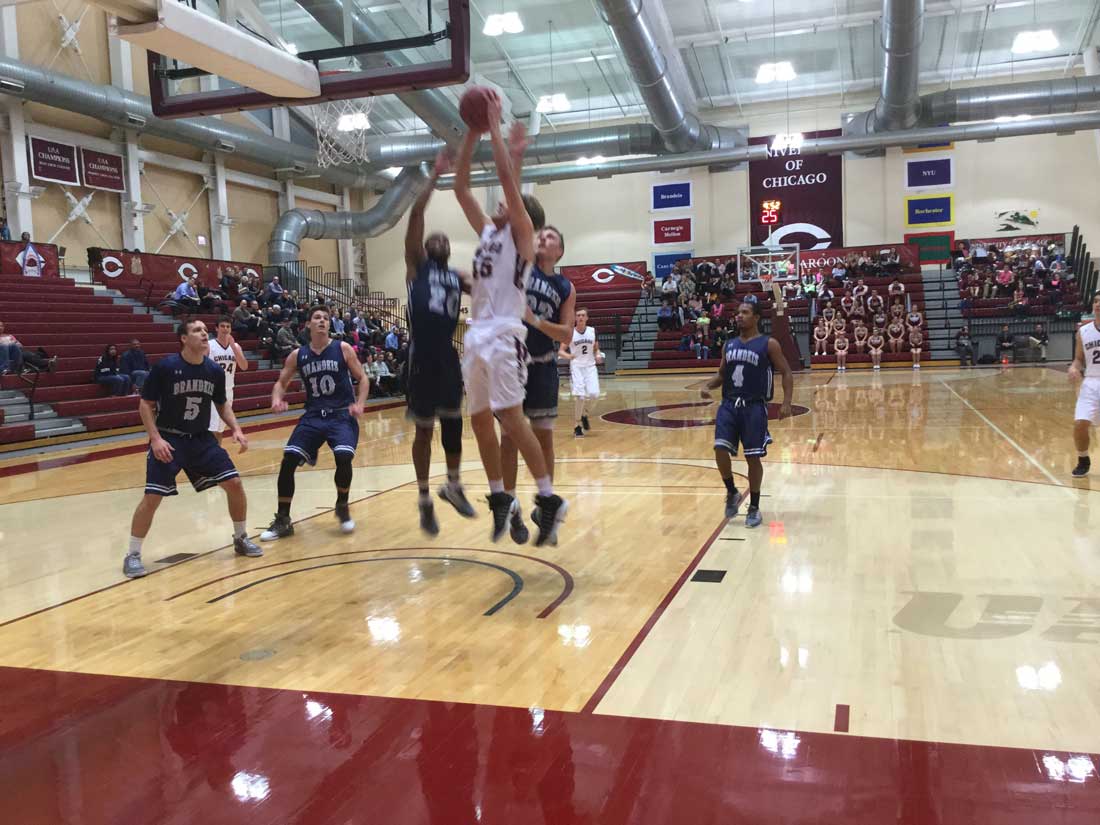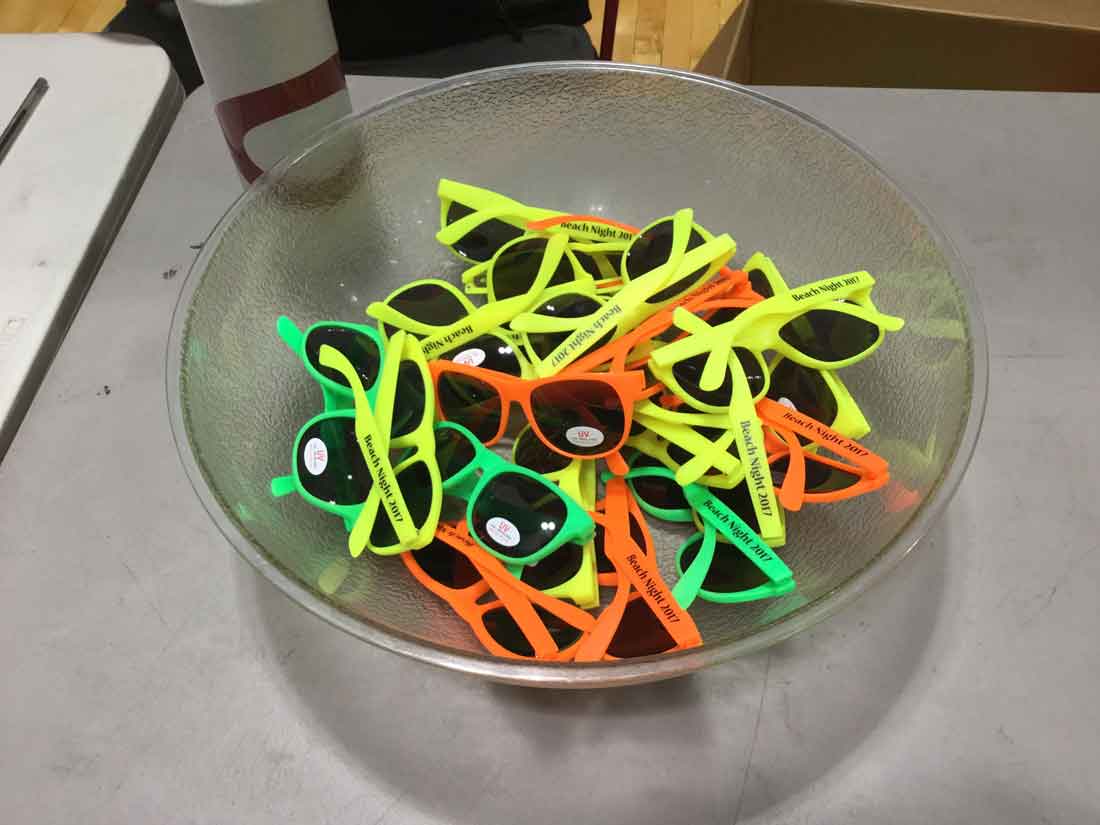By Tacuma R. Roeback
On a late January evening at the Gerald Ratner gymnasium at the University of Chicago, students trickled through the doors to collect neon-colored tank tops, sunglasses and Hawaiian leis.
It was “Beach Night.”
They came to socialize. They came to be transported from the dreary, 37-degree night that would greet them again when it was all over.
Basketball was also being played, featuring the University of Chicago men’s team in its second home conference game of the season versus Brandeis. It was the main attraction of the festivities, but hardly the main draw for many of the students in attendance.
“Honestly, I completely forgot about this until like 10 minutes ago,” said Jaden Obayan, a Geophysical Sciences major at the University of Chicago.
“We came for the free shirts,” she added.
Such is the vibe among many University of Chicago students, who don’t prioritize collegiate sports like other academic institutions.
“It’s just different because I’ve gone to schools like the University of Wisconsin,” Obayan said. “Everybody is repping the school.”
As for the sports culture at the University of Chicago, “It’s just different,” she said. “Here, people don’t really care.”
In fact, the primary reason why students seem indifferent toward sports is an important one, which might be enough to make the parents of any undergraduate smile.
“At some games the student population at the library is definitely going to outnumber the student population at games,” said Nathan Lindquist, University of Chicago director of sports information and promotions and the primary coordinator for “Beach Night.”
“That’s just how it is. It’s an academically rigorous place. That’s their priority.”
Although students have the option of attending the men’s and women’s basketball games for free, the contests draw anywhere between 200 to 300 students. Whenever the men’s and women’s teams play rivals like Washington University—St. Louis, the team can draw as much as 1,000 students to games.

It would be unfair to compare the Division III University of Chicago to a bigtime Division I program like Wisconsin or the University of Kentucky. That might be like comparing a Prince cover band to the real thing. Kentucky basketball generates serious revenue through attendance and merchandise, while the University of Chicago does not.
The differences are staggering.
Kentucky had the best average attendance in men’s college basketball with 23,361 in 2016, according to the NCAA. Still, the same report showed that even the 100th ranked team in D-1 attendance, Southern Illinois, averaged 5,277 people a game.
For this reason, said Lindquist, promotions like “Beach Night,” which are designed to get non-sports fans out to the games, are vital.
“How do we get people who are not interested in athletics to get interested in any way they can?” he said.
Another point Lindquist and his promotions team ponders is this: “’You might not be interested in this sport, but you might be interested in this theme,” he said.
“And this might be enough to get you in the building, and if we can get you in the building, who knows.”

Last year, the promotions team held a Harry Potter-inspired quidditch game at halftime, where participants “flew around” on plastic brooms and threw balls through hoops for points, among other things.
The event, said Lindquist, was extremely popular.
In terms of atmosphere, “Beach Night,” appeared to be a hit as well.

From the wall hangings of cartoon people in grass skirts to the tissue pineapples and students wearing neon shades, the theme seemed to resonate on this late January evening.
A small band played renditions of songs like Star Wars’ Imperial March and the cheerleaders tried their best to compel the half-full gymnasium.
The on-court product was respectable as well, according to John Hodel, who was overseeing the officiating of the men’s game for the University Athletic Association conference.
“The players don’t make too many mental mistakes,” Hodel said. “They play a very fundamental sound game.”
The University of Chicago men’s and women’s teams beat Brandeis on “Beach Night.” They would even go on to win their next games versus New York University.
Almost as important, was the fact that “Beach Night” was a success, in the eyes of Lindquist. He estimated that the event drew 700 people.
As for University of Chicago sports in general, Lindquist and his staff conduct events for the sports teams throughout the year.
To get students to come out, they rely on a formula.
“Usually, the biggest things that gets them out is free stuff and free food.”
Will it get more students to come out?
“We want to try anything within reason to get the “not interested” people on campus to get a little interested,” Lindquist said “And get the people that are a little interested into being more interested.”


